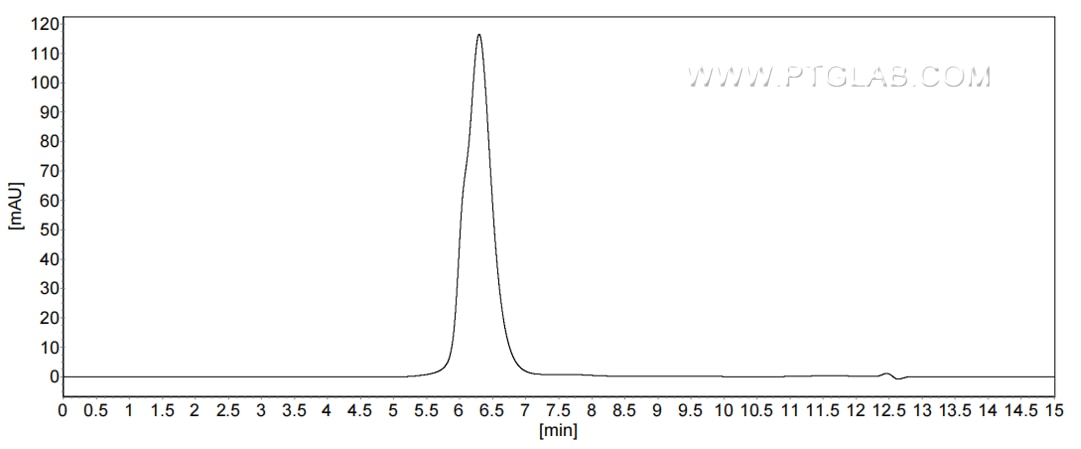Recombinant Human Neuropilin-1 protein (rFc Tag)(HPLC verified)
Species
Human
Purity
>90 %, SDS-PAGE
>90 %, SEC-HPLC
Tag
rFc Tag
Activity
not tested
Cat no : Eg2331
Validation Data Gallery
Product Information
| Purity | >90 %, SDS-PAGE >90 %, SEC-HPLC |
| Endotoxin | <0.1 EU/μg protein, LAL method |
| Activity |
Not tested |
| Expression | HEK293-derived Human Neuropilin-1 protein Phe22-Lys644 (Accession# O14786-2) with a rabbit IgG Fc tag at the C-terminus. |
| GeneID | 8829 |
| Accession | O14786-2 |
| PredictedSize | 96.2 kDa |
| SDS-PAGE | 90-120 kDa, reducing (R) conditions |
| Formulation | Lyophilized from 0.22 μm filtered solution in PBS, pH 7.4. Normally 5% trehalose and 5% mannitol are added as protectants before lyophilization. |
| Reconstitution | Briefly centrifuge the tube before opening. Reconstitute at 0.1-0.5 mg/mL in sterile water. |
| Storage Conditions |
It is recommended that the protein be aliquoted for optimal storage. Avoid repeated freeze-thaw cycles.
|
| Shipping | The product is shipped at ambient temperature. Upon receipt, store it immediately at the recommended temperature. |
Background
Neuropilin-1 (NRP1) is a transmembrane glycoprotein expressed by endothelial, dendritic, and regulatory T cells, as well as several other normal cell types and malignant tumor cells. NRP1 has been demonstrated to play a role in the stability and function of Tregs. It interacts with the ligand Semaphorin-4a (Sema4a) expressed on Tregs to enhance the function and survival of Tregs in tumors, restricting the anti-tumor immune response. NRP1 was also shown to act as a receptor for vascular endothelial growth factor (VEGF) and a promoter of angiogenesis through its interaction with VEGF-A165 (and other VEGFs) and the receptor tyrosine kinase (RTK) VEGF-R2. In summary, NRP1 is a multifunctional receptor protein that is involved in nerve, blood vessel, and tumor development, with implications in immune regulation, tumor growth, and angiogenesis.
References:
1. Gotot J. et al. (2018). Immunol Cell Biol. 96(8):852-862. 2. Yang ZG. et al. (2019). Anat Rec (Hoboken). 302(7):1127-1135. 3. Liu SD. et al. (2020). Chin Med J (Engl). 134(5):508-517. 4. Chaudhary B. et al. (2014). Cancer Immunol Immunother. 63(2):81-99.


